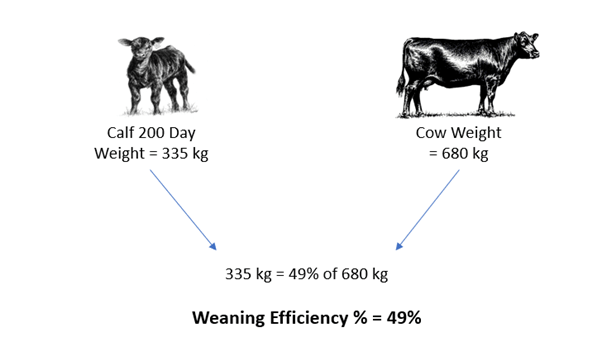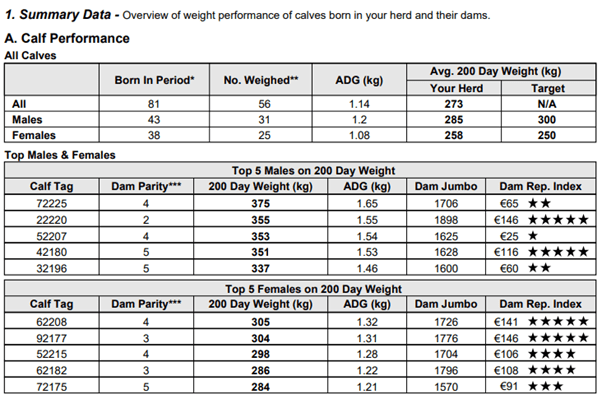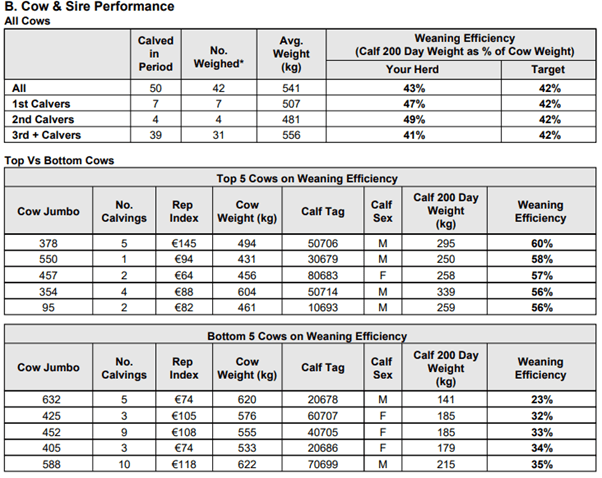On the first of November, the Beef Environmental Efficiency Programme – Suckler (BEEP-S) came to a close alongside the Dairy-Beef Calf Scheme. In total there was 24,092 suckler herds that submitted weights for the BEEP-S scheme, with 493,295 pairs weighed overall.
Table 1: BEEP-S scheme final tally.
| Number of herds | 24,092 |
| Cow-Calf Pairs weighed | 493,295 |
| Average pairs/herd | 20 |
| Average €/herd | €1,700 |
| Total Payment € | €41 Million |
Over the past 3 years farmers have seen the range of benefits that weighing their animals has for their overall herd performance. Weighing has helped farmers to identify the best performing cows, calves and sires, identify any animals which need extra attention, and it has helped farmers to dose and medicate correctly due to having confidence in the correct weight of the animals.
“If you don’t measure it, you cannot manage it”.
Benefits to weighing:
- Identify the best/worst performing animals in the herd and the most efficient females.
- Have confidence when selecting replacements and culling females
- Linking current female performance to their genetic merit (Eurostars).
- Accurate administration of drenches and antibiotics helping to reduce Antimicrobial Resistance (AMR) in the herd.
- Have more confidence in the weights of animals before sale.
Farmers will be receiving their Weaning Performance Reports in the post shortly. These reports are designed to identify the most efficient animals in the herd while accounting for parity and calf age. It also identifies the best sires in the herd based on the average 200 day weight of their progeny. This report will present the efficiency of each cow as a percentage of their bodyweight which they weaned. The aim is to produce lighter mature cows that can wean a calf equal to or greater than their heavier counterparts. If a cow with a mature weight of 680Kg can wean a calf of 335Kg at 200 days, this gives her a weaning efficiency of 49% (335 ÷ 680) . If a heavier counterpart of 850Kg weans a calf the same weight (335Kg) this would produce a weaning efficiency of 39% (335 ÷ 850). The lighter cow will take up less space, eat less silage and produce less methane than the larger cow and produce a calf that is just as good if not better.
200 day weight is an international Key Performance Indicator (KPI) for suckler herds. A calves 200 weight can be accurately predicted based on ADG’s, provided they are weighed between 100 and 300 days.

The report begins with a run-down of the herd with total number of animals weighed, the ADG and the average 200 day weight of the herd. This is followed by the top and bottom calves by weight depending on their sex. The Replacement index of the dam is also shown to identify the best performing dams and the dams that might need attention.

The second page of the report gives the average weight of the cows in the herd including their weaning efficiency by parity. It also shows the top performing cows compared to the bottom performing cows in efficiency. The best performing cows are easily identified by their calf weights alongside the efficiency.

Included in this page is the sire performance. This table is critical for any farmers who uses 2+ sires on the herd, and it can highlight the difference between the sires, with the sire with the highest 200 day weight at the top and the lowest 200 day weight at the bottom. This can really influence future breeding decisions in the herd.

The second section of the report shows the individual weights of each calf in the female and male section, with their estimated 200 day weight, recorded weight and the number of days at which they were weighed. It also shows the dams information such as her weight, her replacement index and stars, actual/adjusted weight and her weaning efficiency. Cow weights are adjusted to 200 days post calving as suckler cows generally gain weight throughout the lactation.

Finally the last page of the report is the exclusion reasons for the herd. If you have weighed an animal and you cannot find them in the report you will find it on the back page with the reason for having not been included in the report. Only calves weighed between 100 and 300 days can be included in the weaning performance report. If a calf dies or is sold before 100 days then it cannot be included in the report. If an animal is not included in this report you may still be eligible for the BEEP payment provided they met the required criteria.

To download your weaning performance report you can logon to your HerdPlus account and go to Reports > Weight > Weaning Performance Report. Any animals that were weighed and not included in this report will be in your Weight Recording Report under the Reports section. You can also see all the weight records of your animals in the weight profile by going to View Profiles > Weight.
If you have any question on the Weaning Performance Report, please contact ICBF on 023-8820452 or email [email protected].
